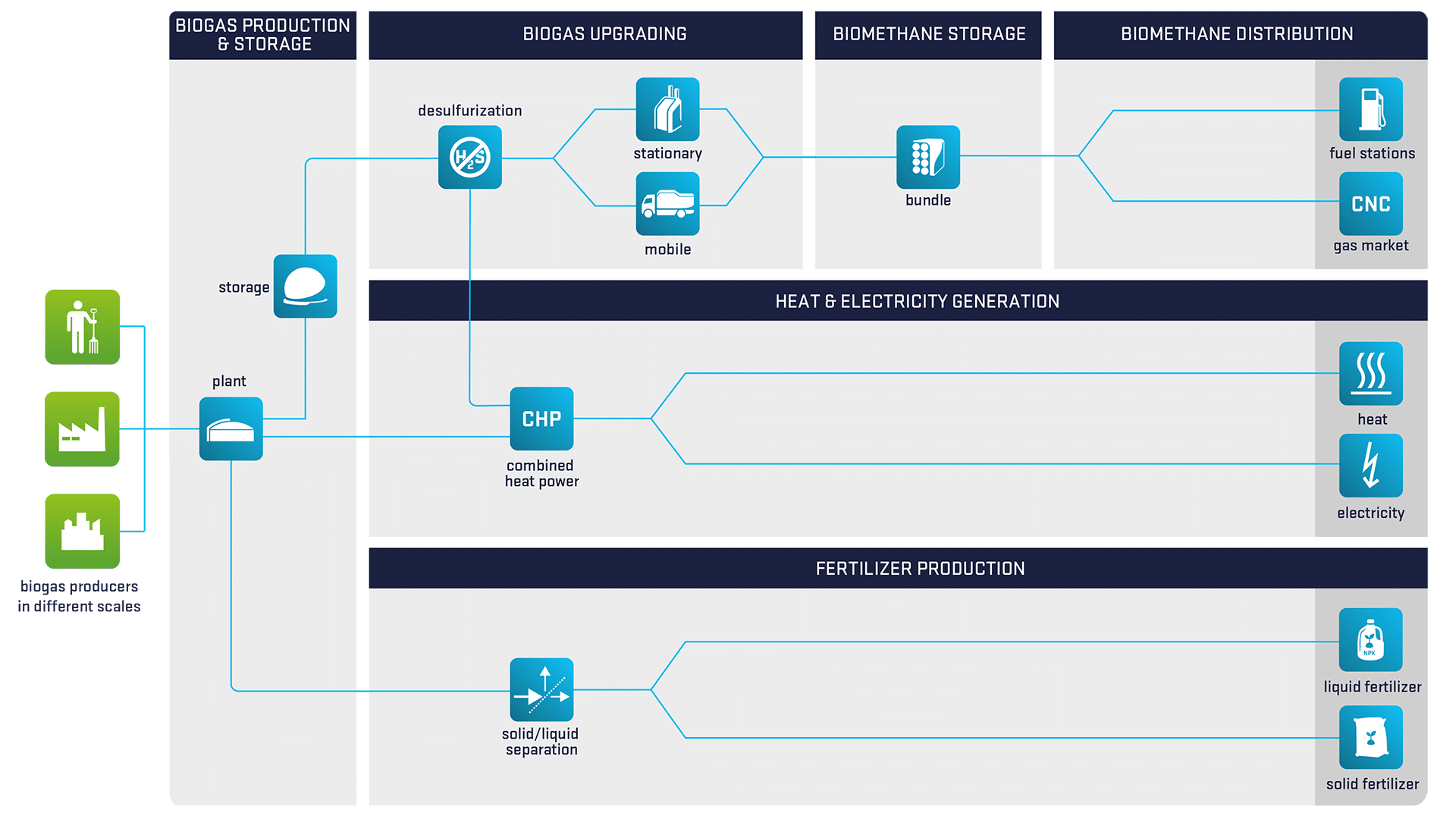Biomethane energy and mobility from agroindustrial waste has the potential to be a gamechanger for the worldwide agriculture. Agriculture itself is a major environmental polluter and responsible for almost 25% of the worldwide CO2 emissions. Waste from food production amounts to 1.300.000.000 tons per year. To turn organic residues and manure – unavoidable byproducts – into the second-generation biofuel biomethane has become a fascinating idea for us.
Biogas, the source of biomethane, is a multi-talent applying to solve several problems: distributed energy generation with electricity and heat self-supply, vehicle fuel or substitution of fossile diesel, natural gas and LNG, but also CO2 as a product and the organic fertilizer and compost.




